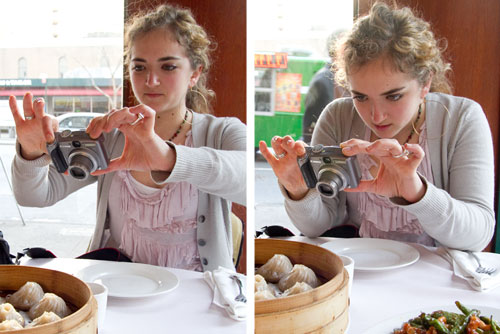<p style="text-align: justify;">These days, the fact that there are literally thousands of new blogs popping up every day from amateur foodies is making it harder than ever before to have your own <b>food photography </b>stand out and be noticed. It’s all blending into much of a muchness, which of course comes down to the fact that blogs are free and easy to set up, while decent camera equipment is practically given away nowadays. As such, those really looking to make a name for themselves or perhaps even launch a career as a food photographer need to understand that there’s so much more to the art itself than just randomly pointing and clicking. Quite to the contrary, it’s a case of arming yourself with the knowledge and insights of leading experts in order to find out both what you should be doing and where you might be going wrong.</p>
<h3 style="text-align: justify;"><b>Improving Every Shot You Take</b></h3>
<p style="text-align: justify;">One of the most important tips of all as far as the industry’s leading experts are concerned is to practice…but practice with a very focused plan of attack. It’s easy for anyone to take a hundred shots of a bowl of soup only to then go through them all, find one that’s ‘decent enough’ and get busy making it slightly more acceptable using Photoshop. Where the difference lies is that a <i>real </i>photographer takes only the shots they know will be more than decent in the first place and will sing on their own, without the need for heavy editing.</p>
<p style="text-align: justify;">This is why if you plan to begin taking things seriously, it’s important to treat every practice shot you take as if it was to be shared with the world. You need to ask yourself if you’d be genuinely happy to put your name and your stamp of approval to the work you’re doing, as opposed to just going through the motions and seeing what happens. It’s about improving every single shot you take, not just improving that one shot out of a thousand you decide to add to your blog.</p>
<h3 style="text-align: justify;"><b>Technical Tips</b></h3>
<p style="text-align: justify;">In terms of technical tips for beginners, the vast majority are identical to those of most other types of photography. Technically speaking, there isn’t a great deal to take into account, but nailing it every time does indeed demand a pretty heavy investment of time and effort.</p>
<p style="text-align: justify;">For example:</p>
<ul style="text-align: justify;">
<li><b>Natural Light</b> – Only ever use natural light or at least carefully targeted ambient light when photographing food or ingredients. It’s almost impossible to pull off a good shot using a flash.</li>
<li><b>Move the Light Source</b> – Try as many different light source angles as possible until you find the perfect direction to accentuate all the right colours and cast perfect shadows.</li>
<li><b>Move the Camera</b> – And with each alteration to the light source, you might also want to try moving the camera itself around as the most obvious angle may not in fact be the best at all.</li>
<li><b>Cut the Clutter</b> – It’s natural to fall into the trap of bringing a thousand different added extras into the picture just to brighten it up, but the simple truth is that the more you add to the frame, the harder it will be to pull it off.</li>
</ul>
<h3 style="text-align: justify;"><b>Troubleshooting</b></h3>
<p style="text-align: justify;">If you’re finding that your shots just aren’t coming out nearly good enough and you’re ready to pack the whole thing in, it could be a simple and common error that’s easy enough to fix:</p>
<ul style="text-align: justify;">
<li><b>Poor Colour Reproduction</b> – If when you take your photos you just cannot seem to capture those colours realistically, 99 times out of 100 this is a white balance issue. Correct your white balance prior to each shot and you won’t believe the difference.</li>
<li><b>Blurred Results</b> – If there’s any kind of blurring involved with a still shot, this basically tells you that insufficient light is being picked up by the camera’s sensor. You can combat this in one of a few ways, with the most obvious being to either amp up the light itself or adjust your shutter speed to allow more to be taken in.</li>
<li><b>Zero Impact</b> – If the colour and definition are both there but there’s still no real impact to your shots, it could be a case of getting to work tweaking contrast, levels of sharpness or perhaps trying out a few filters…the vast majority of pro food photographers using filters on most shoots.</li>
</ul>
<p style="text-align: justify;">On the whole, practice does indeed make perfect but at the same time it’s important to keep tabs on your technique and to avoid as many bad habits as possible. But with the right level of care and focus, you’ll get there in the end.</p>

Food Photography Resources – Tips and Troubleshooting
